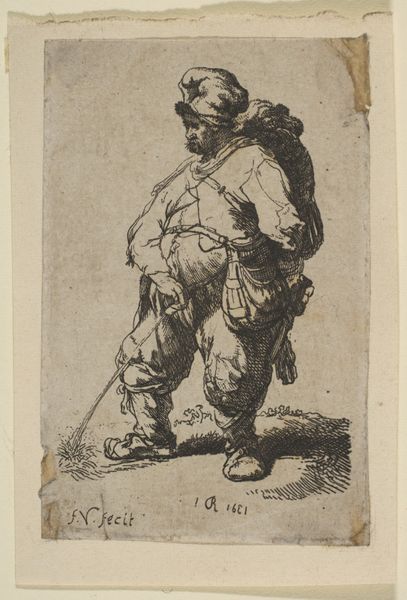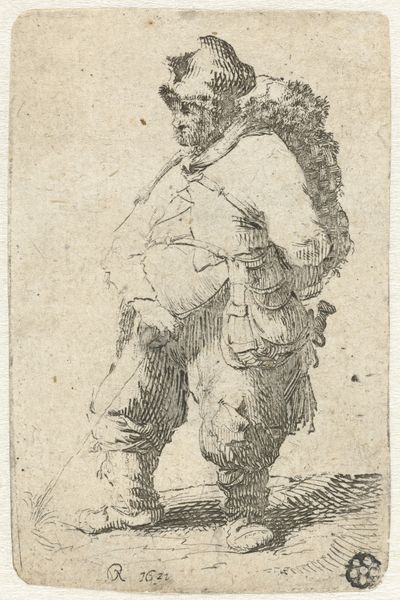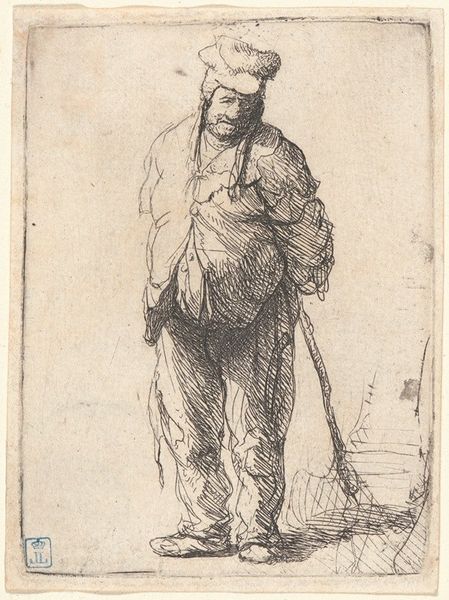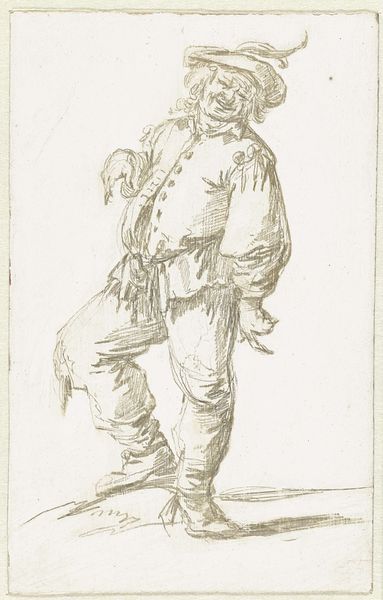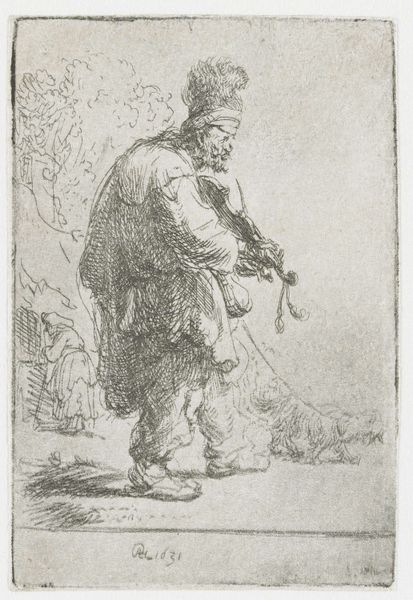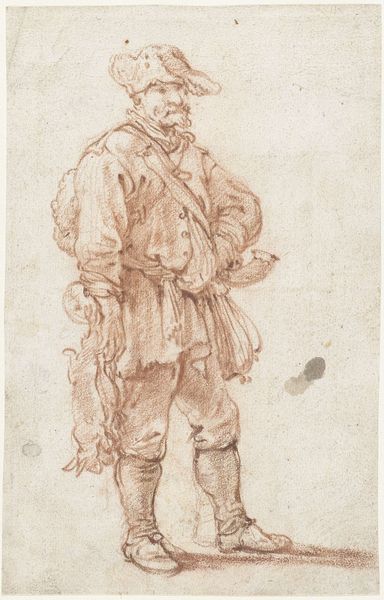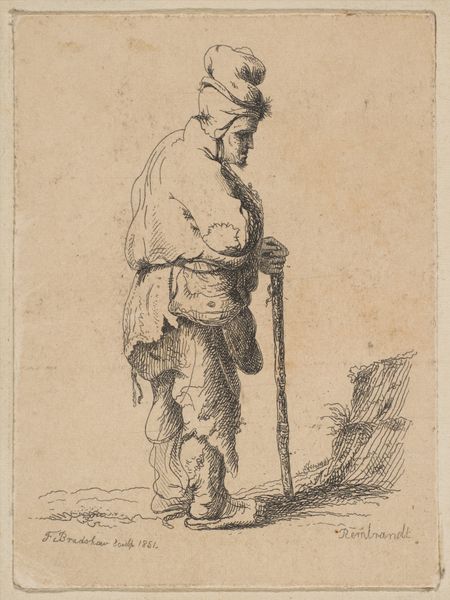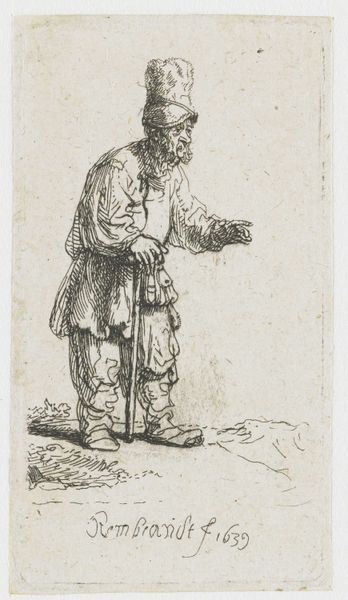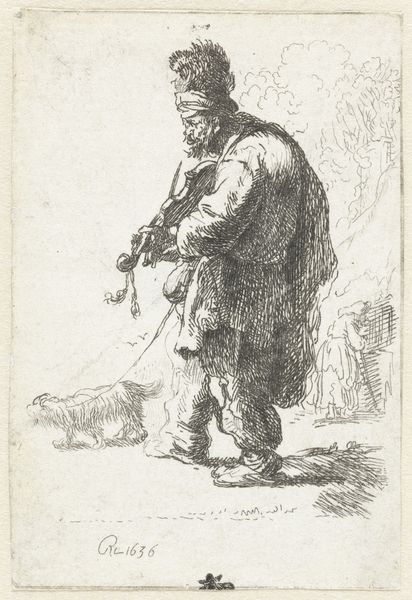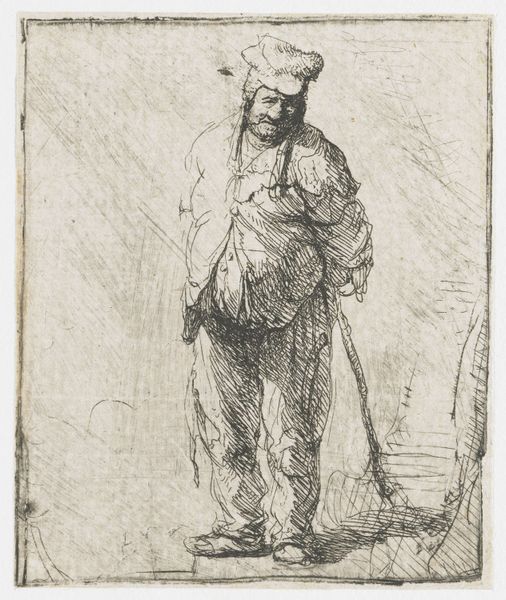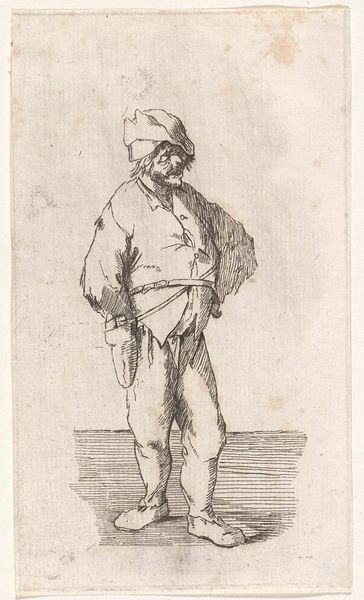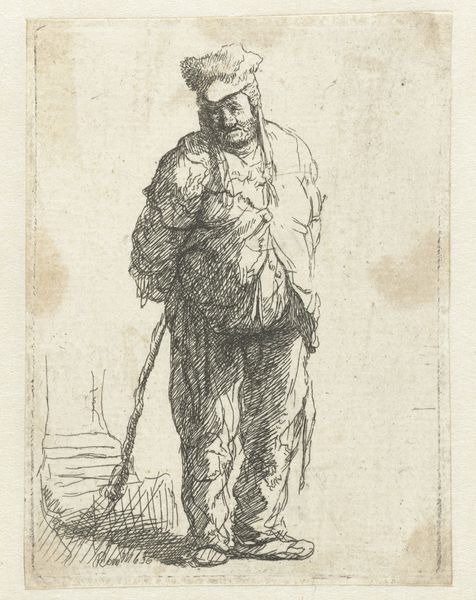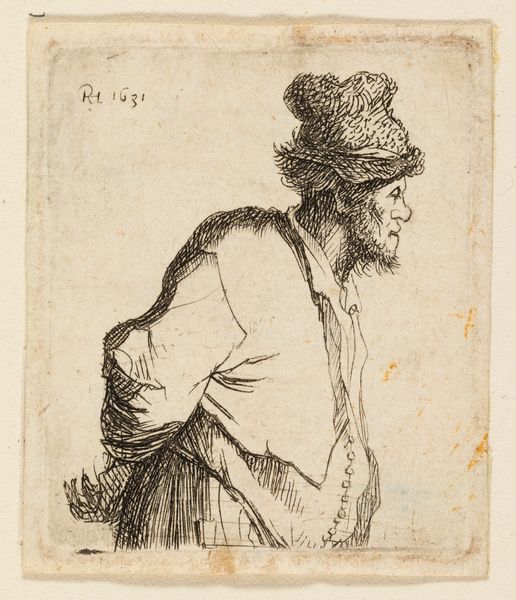
drawing, print, etching
#
portrait
#
drawing
#
baroque
# print
#
etching
#
figuration
Dimensions: Sheet: 3 1/8 × 1 7/8 in. (8 × 4.7 cm)
Copyright: Public Domain
Rembrandt van Rijn etched this small plate, A Man Making Water, sometime around 1631. While seemingly simple, it offers insights into the social fabric of 17th-century Netherlands. The etching depicts a commoner relieving himself, a subject rarely seen in art at the time. Images of peasants were becoming increasingly popular in Dutch art as the country was becoming more urbanized. The increased depiction of poor people in art functioned as a sort of social reassurance for a country that was rapidly expanding its financial power. Rembrandt’s rendering, however, isn’t romanticized. It's a raw, unidealized portrayal of everyday life. This kind of imagery challenged the prevailing conventions of art which favored noble and mythological subjects. To fully understand such a piece, historians delve into contemporary literature, social commentaries, and even records of daily life. By understanding the context, we can appreciate how art both reflected and shaped the perceptions of its time.
Comments
rijksmuseum about 2 years ago
⋮
The man assumes a confident stance and, without taking off his knapsack, produces a powerful stream. The woman does her business behind a tree and keeps a lookout for anyone who might be watching. Nowadays we deem these kinds of scenes as vulgar and inappropriate, but in Rembrandt’s day they were a popular source of amusement.
Join the conversation
Join millions of artists and users on Artera today and experience the ultimate creative platform.
